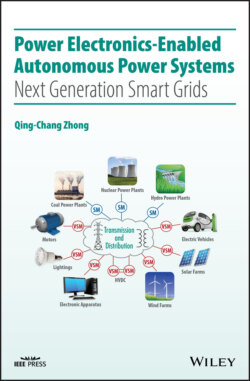Читать книгу Power Electronics-Enabled Autonomous Power Systems - Qing-Chang Zhong - Страница 21
1.3.3 Next‐Generation Smart Grids
ОглавлениеAs mentioned before, adding an ICT system into power systems does not solve the problem of how active players, such as DER units and flexible loads, interact with the grid at the physical level. This could also lead to serious concerns about reliability if their operation has to rely on the ICT infrastructure (Eder‐Neuhauser et al. 2016; Overman et al. 2011). If the ICT system breaks down then the whole power system could crash. Moreover, when the number of active players reaches a certain level, how to manage the ICT system is itself a challenge. What is even worse is that adding ICT systems to power systems opens the door for cyber‐attacks by anybody, at any time, from anywhere, making it a systemic flaw. While ICT systems could certainly bring many benefits to the operation and management of power systems, there is a need to confine the role of ICT.
It is envisioned that the next‐generation smart grids will be power‐electronics‐enabled autonomous power systems without relying on ICT systems, underpinned by the synchronization mechanism of synchronous machines that brings backward compatibility to current power systems (Zhong 2013b, 2016b, 2017e,f).
Table 1.1 outlines the main characteristics of the next‐generation smart grids with comparison to today's grids and smart grids. The prominent features of the next‐generation smart grids include:
That the role of ICT is defined to be unidirectional for monitoring and management only, excluding control, to prevent cyber‐attacks and single point of failures.
That all active players are unified with the same rule of law, which is backward compatible with today's grid, to achieve autonomous operation without relying on ICT and prevent wide‐area blackouts.
That it is governed by a harmonious system architecture that allows the grid to expand as well as to decompose when needed, e.g., in the case of faults to prevent local faults from cascading into wide‐area blackouts.
